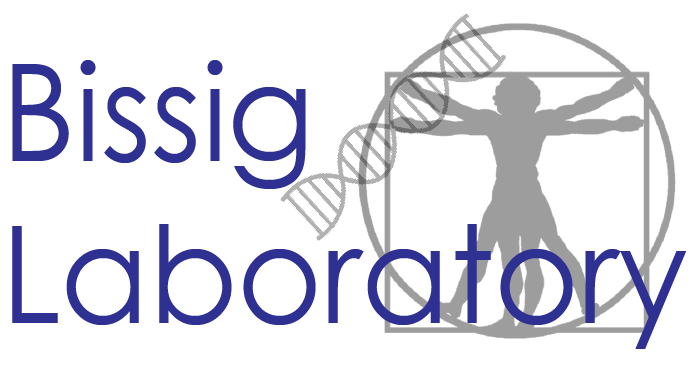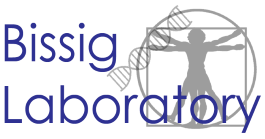Research Areas
Genome Engineering in the Liver
We developed a novel approach to therapeutics that we call metabolic pathway reprogramming (Pankowicz et al., Nature Comm 2016; Pankowicz et al. Gut 2017). Rather than editing the mutated gene in question, with all the attendant risks, this strategy uses CRISPR/Cas9 to delete a critical metabolic gene in a disease-associated pathway: the resultant loss of function re-routes the metabolic pathway, leading to a benign phenotype. We demonstrated the efficacy of this approach by using CRISPR/Cas9 to convert the lethal type I tyrosinemia into the benign type III tyrosinemia (Pankowicz et al., Nature Comm 2016). We are now applying metabolic pathway reprogramming to a variety of amino acid disorders and develop also new xenograft models to validate this therapeutic approach.
Human Liver Chimeric Mice
The liver is the metabolic center of the body. Because it communicates with all other organs, liver disorders are rarely confined to the liver, instead manifesting in multiple organs. This complicates both treatment and the research that needs to be conducted to study such disorders. The major obstacle to such research, however, has been the difficulty of modeling liver disease in animals, because human metabolism is very poorly conserved between species. To overcome these hurdles, we developed the Il2rg-/-/RAG2-/-/ FAH-/-mouse model (Bissig et al., PNAS 2007 and JCI 2010), which has the unique advantage of being able to be populated with cadaveric human hepatocytes. These “humanized” mice have proven to be excellent models for human disease: my lab has used these mice (and variations thereof) to study a range of disorders, from metabolic liver disorders (Bissig-Choisat et al., Nature Comm 2015) to liver cancers (Lin et al., Hepatology 2015; Bissig-Choisat et al., J Hepatol 2016; Valanejad et al., Comm Biol 2018). We optimized this hepatocyte acceptor strain over the years, and use now a transgene free version (no neomycin resistance cassettes) of the Il2rg-/-/RAG2-/-/ FAH-/- mouse, which we call the TIRF (transgene free Il2rg-/-/RAG2-/-/ FAH-/- ) strain.
We recently introduced a new way of modeling human disease by transplanting human hepatocytes from a patient with familial hypercholesterolemia (FH) into the Il2rg-/-/RAG2-/-/ FAH-/- mouse. Like FH patients, the FH liver-chimeric mice developed hypercholesterolemia and a “humanized” serum profile with the emerging drug targets cholesteryl ester transfer protein (CETP) and apolipoprotein (a) (APO(a)), neither of which exist in mice. Moreover, the phenotype of FH-liver chimeric mice was rescued using an Adeno-Associated Virus 9 (AAV9)-based gene therapy and this therapy restored normal lipoprotein profiles with a single dose. For the first time, we demonstrate the induction of a human metabolic disease in an experimental animal model by human hepatocyte transplantation. Such xenograft platforms offer the ability to validate human experimental therapies and foster their rapid translation into the clinic. This work was featured in “research highlights” in Nature Reviews Endocrinology (Greenhill C. Nature Reviews Endocrinology 2015 Sep;11(9):505.).
Another line of research in my laboratory utilizes humanized mouse technology for drug metabolism. Experimental animal models poorly predict human xenobiotic metabolism, because drug-metabolizing enzymes differ considerably between different species. Human liver chimeric mice are a step forward in this regard, as the human hepatocytes in chimeric livers generate human metabolites, but the remaining murine hepatocytes contain an expanded set of P450 cytochromes that form the major class of drug-metabolizing enzymes. Despite the magnitude of the cytochrome P450 family, all cytochromes have only one electron donor, the NADPH-P450 oxidoreductase (Por). We therefore generated a conditional knock-out of the POR gene using Il2rg-/- /Rag2-/-/Fah-/- mice. These PIRF mice can be repopulated with human hepatocytes and when humanized and deleted for the murine POR gene they exhibit a human-only cytochrome metabolism. These mice develop higher levels of the major human metabolites than current models. Humanized, murine Por-deficient PIRF mice can thus predict human drug metabolism and should be useful for preclinical drug development.
Lastly, we have applied our know-how in humanized mouse technology towards liver cancer. Pediatric liver cancer research is limited by the lack of suitable animal models, and the field was especially hindered by the fact that there was no metastatic patient-derived xenograft model (PDTX) for this devastating disease. We established an orthotopic engraftment technique to model a series of PDTX from pediatric liver cancers of all major histologic subtypes: hepatoblastoma, hepatocellular cancer and hepatocellular malignant neoplasm (Bissig-Choisat et al., J Hepatol 2016). These PDTX mice recapitulate the histologic, genetic, and biological characteristics — including the metastatic behavior — of the corresponding primary tumors. Collaborative work identified key regulators of liver cancer (Lin et al., Hepatology 2015; Valanejad et al., Comm Biol 2018).
Pediatric Liver Cancer
Hepatocarcinoma is a field that has lacked viable animal models. We developed an orthotopic engraftment technique to model a series of patient-derived xenografts (PDTX) from pediatric liver cancers of all major histologic subtypes: hepatoblastoma, hepatocellular cancer and hepatocellular malignant neoplasm. These PDTX mice recapitulate the histologic, genetic, and biological characteristics of the corresponding primary tumors, including their metastatic behavior.
We used these models to study hepatoblastoma in collaborations within Baylor College of Medicine and with other universities.
Hepatitis B Virus
Human hepatotropic viruses cannot be cultured, nor do they infect animals other than chimpanzees. Twenty years ago, two groups independently showed that the humanized uPA mouse can be used as an HBV and HCV replication system. Since the TIRF (transgene free Il2rg-/-Rag2-/-/Fah-/-) strain has many advantages over the uPA mouse, we adapted replication of HBV and HCV in humanized IRF mice. This replication system is now used by many scientists and has opened new vistas for viral hepatitis.
We have used this system to develop a combinatorial RNA interference approach against HBV, to target HBV with drug formulated antisense molecules (Billioud et al. J Hepatol 2015) or chimeric antigen receptor T-cells (Kruse et al. Cytotherapy 2018).


